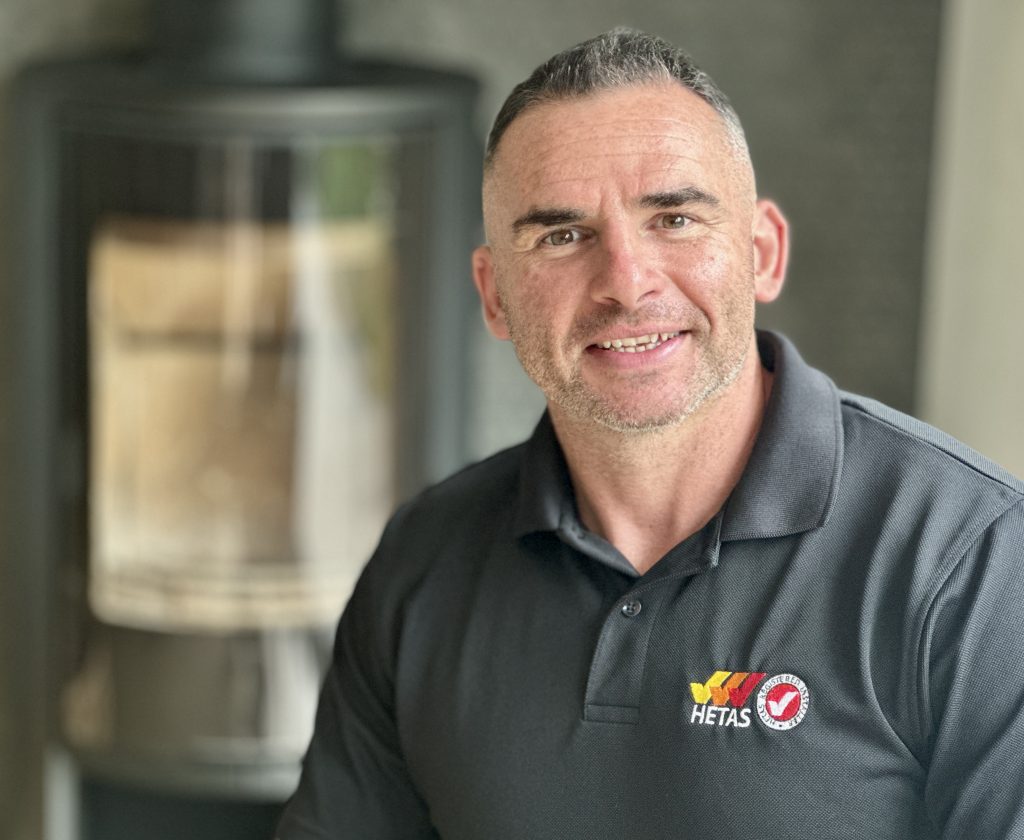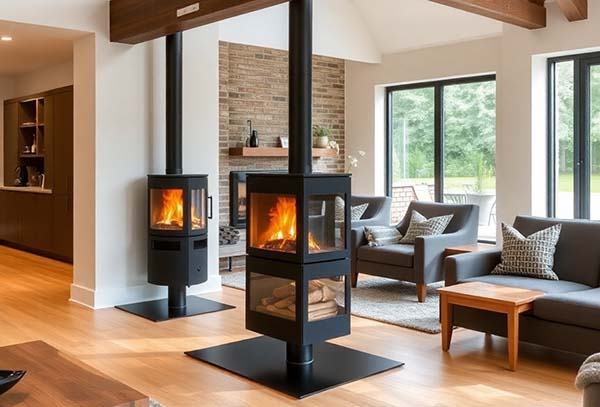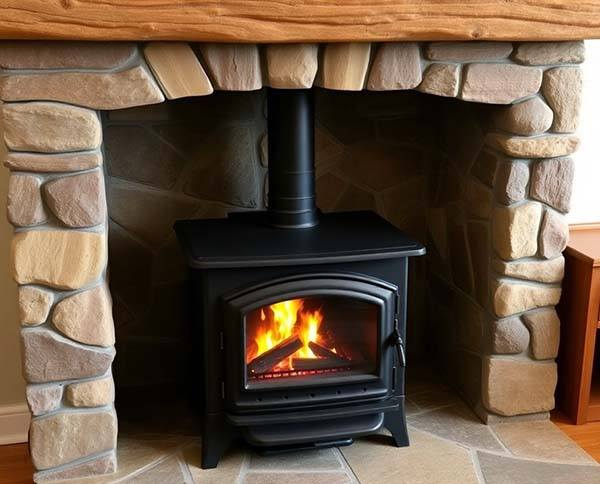When to install one to improve your chimney draw
By Wes Dodd – WD Wood Burner Installations, Poole, Bournemouth & Dorset
One of the most frustrating problems wood burner owners face is poor draw. You light your stove, but instead of flames roaring happily, the fire struggles, smoke drifts into the room, or logs burn far too slowly.
As a HETAS-registered wood burner installer in Poole, Bournemouth, and Dorset, I often help customers solve this problem. In many cases, the answer is simple: improving ventilation or sweeping the chimney. But sometimes, especially in tricky properties, a chimney fan (also called a flue fan or draught booster) can be the perfect solution.
Here’s everything you need to know about when to use a chimney fan, how it works, and whether it’s the right choice for your stove.
What Is a Chimney Fan?
A chimney fan is a small electric fan fitted at the top of your chimney or flue. It creates consistent upward suction, improving the “draw” and helping smoke and fumes exit efficiently.
- Powered fans: Run on electricity and can be switched on/off as needed.
- Wind-powered fans: Use wind to create a venturi effect, boosting natural draw.
They’re designed for homes where the natural chimney draw isn’t strong enough on its own.
Signs You Might Need a Chimney Fan
- Smoke leaks into the room when lighting your stove.
- Your fire keeps going out even with dry logs.
- Poor heat output despite using seasoned wood.
- Downdrafts – smoke coming back into the room when it’s windy.
- Short chimneys (common in bungalows or extensions) that don’t create enough natural pull.
If you live in areas like Hamworthy, Parkstone, or Corfe Mullen, where some homes have shorter chimneys, you’re more likely to benefit from a chimney fan.
Causes of Poor Draw (Before You Install a Fan)
Not every stove needs a fan – sometimes the problem is simpler. Common causes include:
- Blocked chimney – soot, creosote, or even bird nests.
- Wet logs – damp wood creates excess smoke and poor combustion.
- Cold chimney – flues need warming up to create upward draft.
- Oversized or undersized flue liners – can restrict airflow.
- Air supply issues – modern airtight homes may need an air vent.
💡 Tip: Always check these issues first. A chimney sweep or professional inspection often solves the problem without the need for a fan.
Benefits of a Chimney Fan
- Improved safety – reduces risk of smoke or carbon monoxide leaks.
- Better efficiency – logs burn hotter and cleaner.
- Easier lighting – no more struggling to get the fire going.
- Comfort – no smoky smell lingering in your living room.
Comparison Table – Natural Draw vs Chimney Fan
| Factor | Natural Chimney Draw | With Chimney Fan Installed |
|---|---|---|
| Smoke Control | Can backdraft in poor conditions | Consistent smoke extraction |
| Ease of Lighting | May struggle in cold or damp conditions | Lights quickly, minimal smoke in room |
| Efficiency | Dependent on chimney height and weather | Strong, steady airflow every time |
| Maintenance | Needs sweeping only | Fan requires occasional servicing/cleaning |
| Best For | Normal homes with good chimneys | Short chimneys, windy locations, tricky setups |
FAQ: Chimney Fans for Log Burners
1. Do all log burners need a chimney fan?
No – most homes in Dorset don’t need one. Fans are for specific cases where natural draw is weak.
2. Can a chimney fan fix smoke problems in my room?
Yes, if poor draw is the cause. But always rule out wet wood or a blocked chimney first.
3. Are chimney fans noisy?
Most modern electric fans are quiet and designed to be unobtrusive.
4. Can I install a chimney fan myself?
No – it must be fitted by a professional to ensure safety and compliance with building regulations.
5. How much maintenance does a chimney fan need?
Minimal – occasional cleaning and checks during your annual chimney sweep.
6. Are there alternatives to chimney fans?
Yes – improving ventilation, extending the chimney, or warming the flue before lighting often helps. A fan is a last-resort solution.
Final Thoughts
A chimney fan isn’t needed for every home, but for properties with short chimneys, poor natural draw, or tricky flue setups, it can transform your wood burner experience.
As a local wood burner expert in Poole, Bournemouth, and Dorset, I’ll always check all other possible causes first, but when a fan is the right solution, it can make lighting and running your stove effortless.
👉 Contact WD Wood Burner Installations today for expert advice, installations, chimney sweeping, and solutions for poor draw across Dorset.




